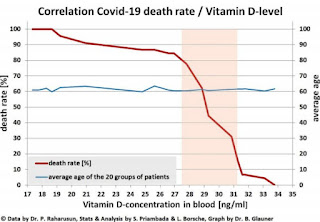Choline has
recently been added to the list of essential nutrients for several
reasons. In a 2020 review, the Dietary
Advisory Committee found that most Americans are deficient in Choline.
Studies show
higher choline intake is linked to decreased heart disease risk and well as a
24% drop in breast cancer risk. Choline supports
optimal health at all stages of life and plays a critical role in healthy fetal
development, helps maintain cognition and memory, boosts energy, and helps regulate
muscle control.
Choline
has several key functions:
Helps the
body produce key cellular messaging compounds
Is critical
for proper cell structure and cell membrane composition
Is necessary
for fat transport and metabolism
Is required
for DNA synthesis
Choline
and Brain Function
Choline Is
key for nervous system health because choline is required for the synthesis of
acetylcholine (ACH) which is a neurotransmitter used throughout the brain and
body.
ACH decreases with age and decreased ACH levels directly reduce
cognitive function. ACH supports alertness, attention, and
learning. ACH levels are critical for memory, and in Alzheimer's patients
ACH levels are lowered.
ACH levels are lowered by many common over the
counter antihistamines taken for allergies and sleep such as
Benadryl. These drugs are directly linked to increased dementia risk
for this reason.
How Much Choline?
Your body produces some choline, but you still require a
substantial amount of dietary choline.
The newly established daily value for choline is 500 mg per day.
You can get it from choline supplements or foods including eggs (113 mg of
choline per egg), beef liver (290 mg of choline per 2.4 ounces), chicken liver
(222 mg of choline per 2.4 ounces), cod (249 mg per 85 grams), and more.
Adequate dietary choline intake is particularly challenging for
vegetarians and even more so vegans because the best dietary sources of choline
are from animal products. It is very difficult to get the 550
mg RDA of choline from purely plant sources. For this reason,
it is worth aging Vegetarians or Vegans consider taking a highly bioavailable
choline supplement like Alpha GPC.
Too Much Choline
Although many people do not get enough choline – too much can cause
a fishy body odor, vomiting, heavy sweating and salivation, low blood pressure, and liver
damage
Groups at
High Risk for Choline Deficiency
Pregnant
woman - According
to a study published in the American Journal of Epidemiology, there is an
increased risk of neural tube birth defects in babies of women who consume less
than 300 mg of choline per day when compared to pregnant women who get at least
500 mg daily.
Because choline will be pulled from the
mother's blood to supply adequate amounts to the fetus, pregnant and lactating
women have higher choline needs, yet only 5% get enough, according to one study.
Endurance athletes — Endurance
exercises, like marathons and triathlons, can deplete choline levels. Studies
show that supplementing with choline before these types of stressful exercises
can help keep the levels of choline in the blood from getting too low.
People who drink a lot of alcohol — Excess alcohol consumption can increase your need for
more choline while simultaneously increasing your risk of deficiency.
Postmenopausal women — Postmenopausal
women have lower estrogen concentrations, which can increase the risk of organ
dysfunction in response to a low-choline diet.




